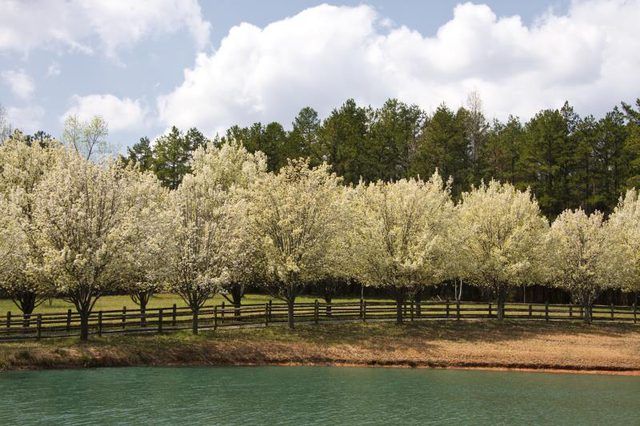Bulbs
Flower Basics
Flower Beds & Specialty Gardens
Flower Garden
Garden Furniture
Garden Gnomes
Garden Seeds
Garden Sheds
Garden Statues
Garden Tools & Supplies
Gardening Basics
Green & Organic
Groundcovers & Vines
Growing Annuals
Growing Basil
Growing Beans
Growing Berries
Growing Blueberries
Growing Cactus
Growing Corn
Growing Cotton
Growing Edibles
Growing Flowers
Growing Garlic
Growing Grapes
Growing Grass
Growing Herbs
Growing Jasmine
Growing Mint
Growing Mushrooms
Orchids
Growing Peanuts
Growing Perennials
Growing Plants
Growing Rosemary
Growing Roses
Growing Strawberries
Growing Sunflowers
Growing Thyme
Growing Tomatoes
Growing Tulips
Growing Vegetables
Herb Basics
Herb Garden
Indoor Growing
Landscaping Basics
Landscaping Patios
Landscaping Plants
Landscaping Shrubs
Landscaping Trees
Landscaping Walks & Pathways
Lawn Basics
Lawn Maintenance
Lawn Mowers
Lawn Ornaments
Lawn Planting
Lawn Tools
Outdoor Growing
Overall Landscape Planning
Pests, Weeds & Problems
Plant Basics
Rock Garden
Rose Garden
Shrubs
Soil
Specialty Gardens
Trees
Vegetable Garden
Yard Maintenance
Diseases of Bradford Pear Trees
Diseases of Bradford Pear Trees. The Bradford pear (*Pyrus calleryana* 'Bradford') has been used as a decorative, flowering specimen across U.S. Department of Agriculture plant hardiness zones 5 through 9 since the early 1900s. Unfortunately, this cultivar and several others of the species are prone to numerous diseases and problems; the tree is...

The Bradford pear (Pyrus calleryana 'Bradford') has been used as a decorative, flowering specimen across U.S. Department of Agriculture plant hardiness zones 5 through 9 since the early 1900s. Unfortunately, this cultivar and several others of the species are prone to numerous diseases and problems; the tree is also highly invasive throughout much of the eastern, southern and central U.S.
General Information
The Bradford pear is the most disease- and pest-resistant of the common Callery pears, but it is not completely safe from common diseases. This cultivar generally grows 30 to 40 feet with an attractive oval shape. The white, creamy or grayish flowers are particularly showy and a main selling point for this ornamental pear.
Fire Blight
Fire blight is a bacterial disease caused by the bacteria Erwinia amylovora. Pears (Pyrus spp.) and quince (Cydonia spp.), which grow in USDA zones 5 through 9, are particularly susceptible; although the 'Bradford' cultivar shows the most resistance to this bacterial disease out of the Callery pears, fire blight still attacks.
In general, the first symptoms are branch and tree cankers, which are small to large areas of dead bark, in spring. A watery, tan ooze seeps out of the cankers and turns a much darker color as it hits the air. The ooze leaves unsightly streaks and marks on branches and twigs. Following this, the disease attacks open flowers which turn black and wilt. In 'Bradford' pears, the damage almost always occurs on the tips of branches and twigs.
Remove infected areas of the tree to prevent the spread. Wait until summer or winter when the bacterial infection is at a halt and no longer growing. Disinfect your pruning shears by dipping them in a household disinfectant cleanser and allowing them to air dry. Find the lowest edge of the canker and then follow the branch down to the second joint. Remove the branch at this point; this cutting point removes both the infected branch and the first branch it is attached to, allowing a greater possibility of removing the entire infection.
This disease is heavily influenced by weather. Temperatures in the 70s and 80s mixed with rain or hail provide ideal growing conditions for this bacterial disease. During weather like this, do not fertilize with nitrogen fertilizers or prune the tree; both practices encourage new growth which also encourages the development of the bacteria.
Entomosporium Leaf Spot
Entomosporium leaf spot is a fungal disease caused by Entomosporium maculatum. It generally occurs when temperatures are cool and wet weather persists during the active growing season.
The first signs are small, bright red spots on the leaf surfaces. Small infections of the fungus are more of an eyesore than anything, but severe infection can lead to leaf drop and other issues.
When the disease first shows symptoms, withhold fertilizer applications and do not prune, as these actions can promote new growth of the tree, which encourages fungal development. Remove diseased leaves and destroy by burning.
Avoid overhead watering and daytime irrigation, as these practices create too much moisture and promote fungal development. Water in the early morning. Increase air circulation by pruning lower branches of your 'Bradford' pear after flowering.
Other Problems
While 'Bradford' pear is more resistant to bacterial and fungal diseases, it does come with sometimes severe problems. In particular, this cultivar is known for structural weakness. Most of the weakness stems from the tree's branches' upright growth habit which creates narrow crotches at branch unions. Unfortunately, these weak crotches make the tree highly susceptible to damage from wind, snow or ice.
The trees are short-lived, as well, rarely surviving to 30 years old.
As for its invasive potential, this cultivar was once thought to be sterile because it does not self-pollinate. Unfortunately, newer Callery pear cultivars pollinate 'Bradford' pears, which allow them to produce viable seeds. These trees can then muscle out native trees.